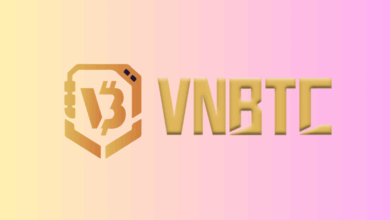True I/O and OroBit Join Forces to Transform Real-World Asset Markets

True I/O, a leading blockchain security firm specializing in real-time, tamper-evident solutions, IoT authentication, and Web3 naming technology for secure supply chains, and OroBit, an innovative platform utilizing Bitcoin Layer 2 technology to enable tokenized private market access, today announced a strategic partnership aimed at transforming blockchain-powered financial and asset management solutions.
This collaboration brings together True I/O’s cutting-edge security infrastructure and OroBit’s pioneering tokenization capabilities to address the burgeoning $12 trillion real-world asset (RWA) tokenization market. Together, the companies aim to provide unparalleled security, transparency, and efficiency in tokenized markets while enabling businesses to unlock new opportunities in asset digitization.
Partnership Highlights
- Enhanced Blockchain Security: True I/O’s proprietary real-time blockchain integrity tools will provide OroBit’s ecosystem with secure, tamper-proof validation mechanisms, ensuring confidence and trust for participants in tokenized asset transactions.
- Expanded Market Access: OroBit’s expertise in Bitcoin Layer 2 technology and tokenized private market access will integrate with True I/O’s solutions to offer a seamless, secure pathway for enterprises seeking to tokenize and transact in high-value real-world assets.
- Commitment to Innovation: Both companies are committed to advancing the adoption of blockchain in real-world applications by bridging security, scalability, and user-centric solutions.
“Partnering with OroBit aligns perfectly with our mission to redefine blockchain security and scalability for enterprise-grade applications,” said Vincent Maher, CEO of True I/O. “With our technology and OroBit’s innovative approach to unlocking the Bitcoin ecosystem, we’re creating a secure and efficient environment for the future of asset digitization.”
OroBit’s leadership echoed this sentiment. “True I/O’s industry-leading expertise and proven track record in blockchain security make them the ideal partner as we drive the next wave of decentralized finance through Bitcoin-native smart contracts,” said Warwick Denman, Managing Director of OroBit. “This partnership enables us to ensure unmatched security while scaling our solutions for enterprises across industries.”
The partnership is well-timed, as both companies are strategically positioned to drive innovation in the tokenization of real-world assets. With the increasing adoption of blockchain technology across finance, IoT supply chains, and other industries, this collaboration ensures that enterprises can securely and efficiently transition into the next era of asset digitization.
True I/O, who successfully closed their tokenized $10 million Series A round, has solidified its position as a blockchain security leader, delivering real-time, tamper-evident solutions for critical applications and advanced web3 blockchain naming technology. OroBit, in collaboration with Deal Box, has already made waves in the Bitcoin Layer 2 space, creating groundbreaking solutions that merge traditional finance with blockchain innovation.
About True I/O
True I/O is a blockchain security firm specializing in real-time, tamper-evident solutions, secure supply chains, and authentication for IoT devices. Leveraging Web3 blockchain naming technology, True I/O ensures robust identity management and product authentication, safeguarding data integrity while enabling scalable blockchain implementations. By delivering trust, transparency, and cutting-edge solutions, True I/O empowers businesses to thrive in a connected world. Learn more at www.trueio.io.
About OroBit
OroBit is at the forefront of decentralizing finance with its Bitcoin-native smart contracts and tokenized assets. Anchored by real gold, OroBit blends blockchain innovation with tangible security. Discover more at orobit.ai. For additional information, visit www.orobit.ai.
Media Inquiries
Thomas Carter
Email: [email protected]
Warwick Denman
Managing Director, OroBit, Inc.
Email: [email protected]
Source link




